H2010BL Safari 10AT10
Philco, Philadelphia Stg. Batt. Co.; USA
- País
- Estados Unidos
- Fabricante / Marca
- Philco, Philadelphia Stg. Batt. Co.; USA
- Año
- 1959
- Categoría
- Televisión (TV) o monitor
- Radiomuseum.org ID
- 90677
- Numero de valvulas
- 3
- Numero de transistores
- 21
- Semiconductores
- T1561 T1600 T1597 T1559 T1559 T1729 T1730 T1593 T1594 T1595 T1598 2N225 2N225 T1596 2N224 T1601 T1599 2N224 T1001 2N260 T1602
- Principio principal
- Superheterodino en general
- Gama de ondas
- Bandas de recepción puestas en notas.
- Tensión de funcionamiento
- Red / Acumuladores (posiblemente también baterias) / 105-120/7.5 Volt
- Altavoz
- Altavoz dinámico (de imán permanente)
- Material
- Cuero/Tela/ Plástico sobre otros materiales
- de Radiomuseum.org
- Modelo: H2010BL Safari 10AT10 - Philco, Philadelphia Stg. Batt
- Forma
- Portátil > 20 cm (sin la necesidad de una red)
- Ancho, altura, profundidad
- 8.5 x 16.5 x 5.5 inch / 216 x 419 x 140 mm
- Anotaciones
-
Philco had developed and produced the "World's First Transistorized Portable Battery Operated TV" in 1959. It contained 21 PNP transistors, 12 diodes, (2) High-Voltage rectifier tubes(5642), and (1) 2" Cathode Ray Picture Tube(2EP4) . Philco used a optical system, which consists of a spherical mirror sytem to magnify the small picture image from the 2" CRT tube (30 degree deflection), to a larger projection viewing image, which was equivalent to 14 inch screen. This TV also has its own retractable telescopic antenna and has a VHF tuner that will tune in US channels 2 thru13. And it also will run on either 105-120v AC power or on a 7.5v rechargable Alkaline DC battery, which can last 4 hours and is rechargable up to 20 times. Philco had started selling these "Safari" TV's in June of 1959, for a retail price of $250.00, not including battery, which was $5.25 extra.
There are four variants of the Philco Safari: Model H2010L is brown leather and model H2010BL is black leather. For each model number, there is an early version which corresponds to the 1959 schematic in the Philco Service Manual PR-3324 (this schematic was also published in the Sams supplemental folder 26S in set 460 in 1959) and the normal version, as documented in Sams set 475 folder 2 in 1960. The differences between the early and normal versions include elimination of the sound take-off transformer in the normal version as well as some changes in transistor types used.
- Peso neto
- 7 kg / 15 lb 6.7 oz (15.419 lb)
- Precio durante el primer año
- 250.00 $
- Procedencia de los datos
- -- Collector info (Sammler)
- Mencionado en
- Funkschau (1959 Heft 14)
- Documentación / Esquemas (1)
- Radio Bulletin September 1964
- Documentación / Esquemas (2)
- Photofact Folder, Howard W. SAMS (Set 475 folder 2)
- Documentación / Esquemas (3)
- Silicon Chip January 2014, page 94
- Autor
- Modelo creado por un miembro de A. Ver en "Modificar Ficha" los participantes posteriores.
- Otros modelos
-
Donde encontrará 4120 modelos, 2227 con imágenes y 3768 con esquemas.
Ir al listado general de Philco, Philadelphia Stg. Batt. Co.; USA
Colecciones
El modelo H2010BL Safari es parte de las colecciones de los siguientes miembros.
Contribuciones en el Foro acerca de este modelo: Philco, Philadelphia: H2010BL Safari 10AT10
Hilos: 1 | Mensajes: 1
Philco in 1959 had announced and produced the "SAFARI", which was the "World's First Transistor portable battery operated television", to be developed and produced.
Philco started to sell it to the public in June 1959, for a retail price of $250.00 (not including the 7.5v Alkaline DC re-chargeable battery - extra $5.25 cost).
This Philco "Safari" portable TV model 2010, had contained 21 PNP transistors and could be operated on either 105-120v AC power or on a Philco Long-Life 7.5v Alkaline removable DC re-chargeable battery.
The size and weight of the Philco "Safari" TV:
8 1/2 " Wide x 16 1/2" High x 5 1/2" Deep - 15 1/2 pounds with battery and charger included.
These Philco models came in two colors: (Tan or Black) leather-covered cabinet.
Finally, I had made a YouTube Video Clip, which includes an original 1959 Philco commercial, that explains and shows the "NEW" Safari Transistor portable battery operated TV.
Here is the YouTube Link ..... Just "Click" on it to watch
Thanks and I hope that everyone enjoys the above info and YouTube video.
Rick Hirsh, 12.Oct.12
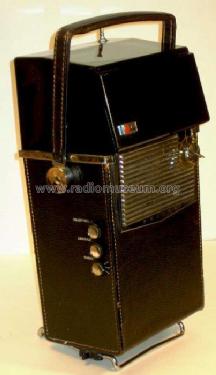



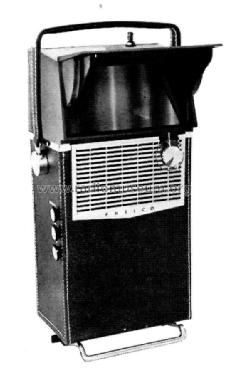
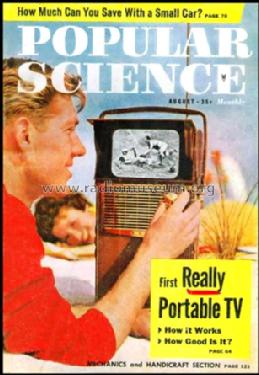


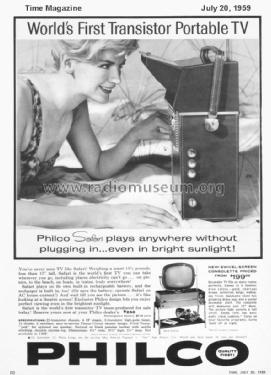




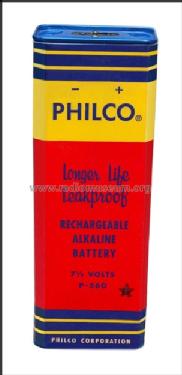




![[Image: PhilcoSafariTV-YouTubevideothumbwheel.jpg]](http://i1247.photobucket.com/albums/gg632/electricalengineer1958/PhilcoSafariTV-YouTubevideothumbwheel.jpg)